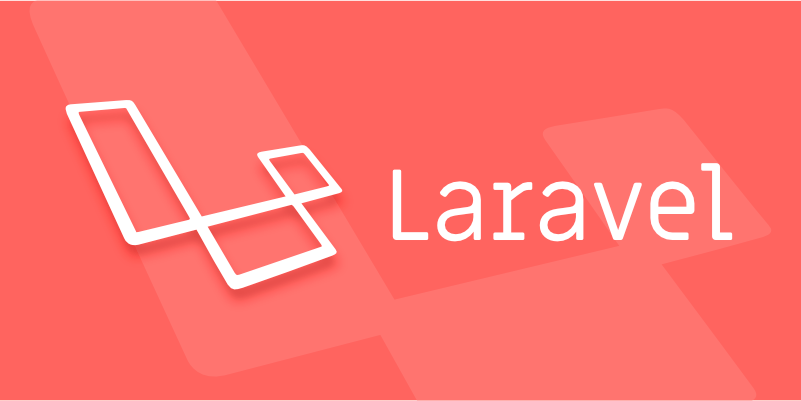To run Laravel queue workers efficiently, choose a reliable driver like Redis or database, configure them properly in .env and config/queue.php. Use optimized Artisan commands with --tries, --timeout, and --sleep settings, and manage workers via Supervisor for stability. Monitor failed jobs, handle memory leaks by restarting workers, adjust Redis visibility timeout to avoid duplication, and clear cache after deploying changes. 1. Choose Redis or database driver for production. 2. Set QUEUE_CONNECTION in .env and verify connection details in config/queue.php. 3. Run queue:work with --queue, --tries=3, --timeout=90, --sleep=5. 4. Use Supervisor for process monitoring. 5. Retry failed jobs with queue:retry and log them via failed_jobs table. 6. Restart workers periodically to prevent memory leaks. 7. Adjust Redis visibility timeout to prevent job duplication. 8. Clear config cache after updating job classes.

When you're running background jobs in Laravel, setting up queue workers properly is key to making sure tasks get processed efficiently without delays or errors. The core idea is to keep the worker running smoothly and avoid common pitfalls like memory leaks or job duplication.

Choosing the Right Queue Driver
Laravel supports several queue drivers — Redis, database, Beanstalkd, Amazon SQS, and even synchronous processing for local testing. For production setups, Redis or database are commonly used because they’re reliable and easy to manage.
- Redis offers better performance and built-in support for things like retries and delayed jobs.
- Database driver works well too, especially if you already have a MySQL or PostgreSQL setup and don’t want extra dependencies.
Make sure your .env file points to the right driver:

QUEUE_CONNECTION=redis
Also, double-check your config/queue.php to set the correct connection details like host, port, and queue name.
Running the Worker Efficiently
Once your driver is configured, start the worker using Artisan:

php artisan queue:work --queue=default
But that’s just the basic command. Here are some useful flags to consider:
--tries: Specify how many times a failed job should be retried before being marked as failed permanently. Usually 3 tries is a good default.--timeout: Set a maximum time (in seconds) a job can run before it's killed and retried. Be realistic here — too short and your jobs might get cut off; too long and you risk blocking other tasks.--sleep: How long the worker should wait before checking for new jobs when the queue is empty. A value between 3 and 10 seconds is typical.
For example:
php artisan queue:work --queue=default --tries=3 --timeout=90 --sleep=5
And don’t forget to use a process monitor like Supervisor or PM2 to make sure the worker keeps running even after a crash or server reboot.
Monitoring and Debugging Common Issues
Even with everything set up, things can go wrong. Jobs might fail silently, get stuck, or take longer than expected. Here’s what to watch out for:
-
Failed jobs: Use
php artisan queue:retry allto retry all failed jobs or specify a particular ID. You can also log failed jobs by creating afailed_jobstable via migration. -
Memory leaks: Workers can accumulate memory over time, especially if you're doing heavy operations inside jobs. Restarting the worker every few hours helps. You can do this automatically using Supervisor's
autorestartoption. - Job duplication: If you're using Redis and notice duplicate jobs, check your visibility timeout settings. Jobs reappear in the queue if they aren't acknowledged quickly enough.
One thing people often miss is clearing cache after updating job classes. Always run php artisan config:clear or restart the worker after deploying changes.
That’s basically it. It doesn’t have to be complicated, but getting these small details right makes a big difference in keeping your queue system stable and responsive.
The above is the detailed content of Setting up Queue Workers in Laravel.. For more information, please follow other related articles on the PHP Chinese website!

Hot AI Tools

Undress AI Tool
Undress images for free

Undresser.AI Undress
AI-powered app for creating realistic nude photos

AI Clothes Remover
Online AI tool for removing clothes from photos.

Clothoff.io
AI clothes remover

Video Face Swap
Swap faces in any video effortlessly with our completely free AI face swap tool!

Hot Article

Hot Tools

Notepad++7.3.1
Easy-to-use and free code editor

SublimeText3 Chinese version
Chinese version, very easy to use

Zend Studio 13.0.1
Powerful PHP integrated development environment

Dreamweaver CS6
Visual web development tools

SublimeText3 Mac version
God-level code editing software (SublimeText3)
 How to set environment variables in PHP environment Description of adding PHP running environment variables
Jul 25, 2025 pm 08:33 PM
How to set environment variables in PHP environment Description of adding PHP running environment variables
Jul 25, 2025 pm 08:33 PM
There are three main ways to set environment variables in PHP: 1. Global configuration through php.ini; 2. Passed through a web server (such as SetEnv of Apache or fastcgi_param of Nginx); 3. Use putenv() function in PHP scripts. Among them, php.ini is suitable for global and infrequently changing configurations, web server configuration is suitable for scenarios that need to be isolated, and putenv() is suitable for temporary variables. Persistence policies include configuration files (such as php.ini or web server configuration), .env files are loaded with dotenv library, and dynamic injection of variables in CI/CD processes. Security management sensitive information should be avoided hard-coded, and it is recommended to use.en
 What is Configuration Caching in Laravel?
Jul 27, 2025 am 03:54 AM
What is Configuration Caching in Laravel?
Jul 27, 2025 am 03:54 AM
Laravel's configuration cache improves performance by merging all configuration files into a single cache file. Enabling configuration cache in a production environment can reduce I/O operations and file parsing on each request, thereby speeding up configuration loading; 1. It should be enabled when the application is deployed, the configuration is stable and no frequent changes are required; 2. After enabling, modify the configuration, you need to re-run phpartisanconfig:cache to take effect; 3. Avoid using dynamic logic or closures that depend on runtime conditions in the configuration file; 4. When troubleshooting problems, you should first clear the cache, check the .env variables and re-cache.
 How to make PHP container support automatic construction? Continuously integrated CI configuration method of PHP environment
Jul 25, 2025 pm 08:54 PM
How to make PHP container support automatic construction? Continuously integrated CI configuration method of PHP environment
Jul 25, 2025 pm 08:54 PM
To enable PHP containers to support automatic construction, the core lies in configuring the continuous integration (CI) process. 1. Use Dockerfile to define the PHP environment, including basic image, extension installation, dependency management and permission settings; 2. Configure CI/CD tools such as GitLabCI, and define the build, test and deployment stages through the .gitlab-ci.yml file to achieve automatic construction, testing and deployment; 3. Integrate test frameworks such as PHPUnit to ensure that tests are automatically run after code changes; 4. Use automated deployment strategies such as Kubernetes to define deployment configuration through the deployment.yaml file; 5. Optimize Dockerfile and adopt multi-stage construction
 Explain Laravel Eloquent Scopes.
Jul 26, 2025 am 07:22 AM
Explain Laravel Eloquent Scopes.
Jul 26, 2025 am 07:22 AM
Laravel's EloquentScopes is a tool that encapsulates common query logic, divided into local scope and global scope. 1. The local scope is defined with a method starting with scope and needs to be called explicitly, such as Post::published(); 2. The global scope is automatically applied to all queries, often used for soft deletion or multi-tenant systems, and the Scope interface needs to be implemented and registered in the model; 3. The scope can be equipped with parameters, such as filtering articles by year or month, and corresponding parameters are passed in when calling; 4. Pay attention to naming specifications, chain calls, temporary disabling and combination expansion when using to improve code clarity and reusability.
 PHP development user permission management monetization PHP permission control and role management
Jul 25, 2025 pm 06:51 PM
PHP development user permission management monetization PHP permission control and role management
Jul 25, 2025 pm 06:51 PM
User permission management is the core mechanism for realizing product monetization in PHP development. It separates users, roles and permissions through a role-based access control (RBAC) model to achieve flexible permission allocation and management. The specific steps include: 1. Design three tables of users, roles, and permissions and two intermediate tables of user_roles and role_permissions; 2. Implement permission checking methods in the code such as $user->can('edit_post'); 3. Use cache to improve performance; 4. Use permission control to realize product function layering and differentiated services, thereby supporting membership system and pricing strategies; 5. Avoid the permission granularity is too coarse or too fine, and use "investment"
 How to use PHP combined with AI to analyze video content PHP intelligent video tag generation
Jul 25, 2025 pm 06:15 PM
How to use PHP combined with AI to analyze video content PHP intelligent video tag generation
Jul 25, 2025 pm 06:15 PM
The core idea of PHP combining AI for video content analysis is to let PHP serve as the backend "glue", first upload video to cloud storage, and then call AI services (such as Google CloudVideoAI, etc.) for asynchronous analysis; 2. PHP parses the JSON results, extract people, objects, scenes, voice and other information to generate intelligent tags and store them in the database; 3. The advantage is to use PHP's mature web ecosystem to quickly integrate AI capabilities, which is suitable for projects with existing PHP systems to efficiently implement; 4. Common challenges include large file processing (directly transmitted to cloud storage with pre-signed URLs), asynchronous tasks (introducing message queues), cost control (on-demand analysis, budget monitoring) and result optimization (label standardization); 5. Smart tags significantly improve visual
 How to build a content payment platform through PHP How to implement PHP paid reading system
Jul 25, 2025 pm 06:30 PM
How to build a content payment platform through PHP How to implement PHP paid reading system
Jul 25, 2025 pm 06:30 PM
To build a PHP content payment platform, it is necessary to build a user management, content management, payment and permission control system. First, establish a user authentication system and use JWT to achieve lightweight authentication; second, design the backend management interface and database fields to manage paid content; third, integrate Alipay or WeChat payment and ensure process security; fourth, control user access rights through session or cookies. Choosing the Laravel framework can improve development efficiency, use watermarks and user management to prevent content theft, optimize performance requires coordinated improvement of code, database, cache and server configuration, and clear policies must be formulated and malicious behaviors must be prevented.
 How to build a log management system with PHP PHP log collection and analysis tool
Jul 25, 2025 pm 08:48 PM
How to build a log management system with PHP PHP log collection and analysis tool
Jul 25, 2025 pm 08:48 PM
Select logging method: In the early stage, you can use the built-in error_log() for PHP. After the project is expanded, be sure to switch to mature libraries such as Monolog, support multiple handlers and log levels, and ensure that the log contains timestamps, levels, file line numbers and error details; 2. Design storage structure: A small amount of logs can be stored in files, and if there is a large number of logs, select a database if there is a large number of analysis. Use MySQL/PostgreSQL to structured data. Elasticsearch Kibana is recommended for semi-structured/unstructured. At the same time, it is formulated for backup and regular cleaning strategies; 3. Development and analysis interface: It should have search, filtering, aggregation, and visualization functions. It can be directly integrated into Kibana, or use the PHP framework chart library to develop self-development, focusing on the simplicity and ease of interface.






